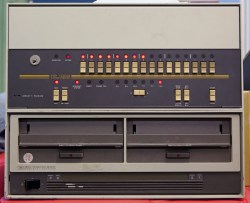Our community’s events are something special, bringing as they do an opportunity to meet and mingle with other hackers whether their field be hardware, software, or security, to share ideas, and to see some very cool projects. Here at Hackaday aside from our own Supercon and Hackaday Europe events we try to take in as many as we can over the year, and thus it’s always interesting to sot a new one. If you’re in north-west Europe next weekend, consider dropping by Hackfest, in the Dutch city of Enschede, right on the German border.
Looking at the program and the projects and workshops listed on the website we can see robotics, lockpicking, demoscene, retrocomputing, and plenty of open source. There are quite a few names which have featured at times here on these pages, something which certainly piqued our interest. Finding that it’s only 15 Euros for a weekend’s admission sealed the deal, and thus it’s time for Hackaday to break out the trusty Interrail pass once more and make the trek. Sadly many of Hackaday’s community will be too far away to join us, but if you’re close enough to make it then it’s one to consider.
This is a part of the world it’s fair to say isn’t often featured on Hackaday, but some of you might remember the city as being at the centre of a Wi-Fi tracking scandal.



















